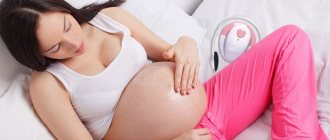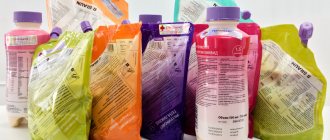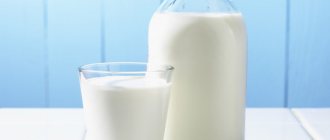What is acne
Acne is a closed inflammation that develops under the surface of the skin. They may look like:
- Papules are painful red bumps.
- Pustules are red bumps with a white abscess on top.
- Nodules are nodular formations that are hard to the touch and look like subcutaneous tubercles.
- Cysts are clusters of nodules.
Where do they come from?
- It all starts with comedones - this is what they call a mixture of dead skin particles, impurities and cosmetic residues that clog the sebaceous ducts.
- Inside the comedon, ideal conditions are created for the development of propionbacteria (they are the ones that provoke inflammation). This is, firstly, the lack of oxygen, and, secondly, the constant replenishment of sebum, which continues to be released and accumulate under the sebaceous plug.
- As a result, bacteria multiply and provoke inflammation - this is how acne appears. They are often called “closed comedones” precisely because all the processes occur below the surface of the skin.
Painful pimples* on the face: the cause of pain in women and men
Acne can be non-inflammatory (open, closed comedones) and inflammatory (papules, pustules, cysts, etc.). Non-inflammatory acne elements, as a rule, only cause aesthetic discomfort, but inflammatory acne elements can cause pain.
The inflammatory process is the primary link in the pathogenesis of acne. It can develop even without the participation of propionibacteria. Inflammation of the pilosebaceous follicle provokes hyperkeratosis, obstruction of the sebaceous gland channels19.
Neutrophilic leukocytes are attracted to the site of inflammation, which contributes to the formation of papules and pustules. The vessels around the inflamed area dilate, and swelling of the follicle appears. It can be felt by palpation, but pain can be felt even if you do not touch the elements of the acne.
Many people think that by squeezing a pimple they will relieve themselves of unpleasant sensations. But when the follicle is destroyed, the contents of the pustule (sebum, pus, fatty acids) enter the deep layers of the skin. These substances provoke irritation and new inflammation, which affects surrounding tissues. As a result, you may notice the rash spreading even more.
Types of imperfections on the face
In addition to acne, there are other types of inflammation, but all of them are somehow associated with blockage of the sebaceous ducts and/or increased sebum production. What is the difference?
Acne
One pimple is not yet acne. But if they spread all over the face and clump together... This means that we are not talking about a one-time inflammation, but about a serious disease that needs to be treated with the support of specialists - a dermatologist, gynecologist, endocrinologist, cosmetologist and gastroenterologist. If acne is started or treated incorrectly, scars and scars may remain on the skin - post-acne.
Black dots
Blackheads are called “open comedones.” The mechanism of their occurrence is the same as that of acne, but the process occurs not under the skin, but on its surface. By the way, blackheads do not become black because of a large amount of dirt: the reason is the oxidative process that occurs when the sebaceous plug and oxygen interact.
Acne
Essentially, blackheads are blackheads that were not removed in time (we have already mentioned that a mixture of sebum and pollution is an ideal environment for the development of bacteria). If you notice acne on your face, do not peel under any circumstances! During the process of exfoliation, you can spread bacteria all over your face and cause acne.
How can you get rid of acne?
06.08.2021
Almost every teenager faces skin problems. Acne , comedones, pimples - all this spoils not only your appearance, but also your mood. With age, some skin problems may remain if you do not take care of them from a young age. So how to get rid of acne ?
Acne forms
Acne due to inflammation of the sebaceous glands of the hair follicles, their blockage . There are several types of this inflammation.
The main signs of acne are comedones, nodular formations, pustular and papular acne , as well as cystic cavities.
There are other approaches to classifying this disease. By age composition there are:
- acne in newborns;
- infant;
- youthful;
- adults.
Acne in newborns does not require treatment. Appear soon after birth. The cause is the mother's excess hormones . Such rashes appear on the wings of the nose and forehead of a newborn. They look like pearly-white papules with a yellowish tint.
Infantile is a special lesion of the facial in children (1-2 years old). Typically, such inflammation is associated with high plasma testosterone levels. This disease can appear in boys after 3 months and does not disappear until 4 years.
Youthful - associated with hormonal surges during puberty.
Causes of this disease:
- hereditary predisposition;
- adolescence;
- stress;
- unbalanced diet;
- skin and gastrointestinal diseases;
- chemical poisoning;
- other skin diseases.
As soon as immunity acne on the chin, nose , cheeks, chest , etc. increases.
Drug treatment of acne
This disease can occur in mild or severe form. A dermatologist treats this disease .
acne area on the face and other parts of the body. Blood tests are taken . After this, a medicinal treatment method is selected.
In this case, the doctor recommends following a diet . You will have to give up sweet, spicy, pickled, and alcoholic drinks. Since poor nutrition will contribute to a longer period of treatment.
In parallel with medicinal drugs, external ointments and creams specially selected by the doctor . As well as peeling preparations with glycolic, salicylic acids, sulfur, resercin.
therapy is also used to treat acne .
There are many inexpensive masks that can be prepared at home using improvised materials. Complex therapy acne marks .
Published in Dermatology Premium Clinic
Causes of acne on the face
Contrary to stereotypes, acne (both small and large) does not only affect teenagers. Nasty lumps can occur in women and men at any age, even infancy! Why does the skin suddenly begin to “bloom”?
Among women
- Hormonal disbalance. Hormones can go crazy, for example, during pregnancy or menopause.
- Genetic predisposition. Most often, acne affects those with oily or combination skin types, which are known to be inherited.
- Poor nutrition. “Dangerous trinity” - flour, fatty, sweet. Try removing it from your diet, and your face will become noticeably cleaner!
- Incorrect care. The main stages of caring for problem skin include cleansing, deep cleansing (exfoliation), makeup removal, toning and moisturizing. You can't miss any of them! At the same time, the composition of cosmetics must contain sebum-regulating and bactericidal components: zinc, salicylic acid, eucalyptus or black elderberry extract, activated carbon, clay, etc.
- Digestive problems. A gastrointestinal disorder can lead to an imbalance of intestinal microflora and the accumulation of toxins that negatively affect the condition of the skin.
- Stress. At the most inopportune moment, a pimple popped up in a visible place? The law of meanness has nothing to do with it: it’s just that the stress hormone cortisol also affects sebum production.
- Bad habits. These are, first of all, smoking, alcohol, poor drinking habits and sleepless nights.
In men
- Lack of care or improper care. Due to the large number of sebaceous glands, men's skin almost always suffers from oiliness. Add to this the abundance of testosterone, which stimulates sebum production, and you will have no questions left about where men get acne.
- Shaving. If bacteria get into the wound after shaving, inflammation is not far off.
In children and adolescents
- Hormonal disbalance. During puberty, adolescents begin to undergo global hormonal changes, and the level of testosterone and dihydrotestosterone production increases. And they, in turn, provoke excessive secretion of sebum. Voila, here you have acne! Most often, inflammation in adolescence occurs in the T-zone: this is where most of the sebaceous glands are located.
- Infant acne. The appearance of pimples on the face of infants is associated with imperfections in the excretory system and an excess of maternal hormones. There is no need to treat them: if hygiene standards are observed, they will go away quite quickly on their own.
Subcutaneous acne: causes and symptoms
The causes of subcutaneous rashes may be as follows29,50,41:
- Endocrine disorders. The work of the sebaceous glands is influenced by androgens. When testosterone levels rise, they produce more sebum, which can lead to breakouts.
- Heredity. It has been proven that if parents have suffered from acne, there is a high probability that the child will also show symptoms of the disease. In addition, there is genetically determined hyperandrogenism, which causes an increased level of sebum production and affects the processes of keratinization.
- Skin injury. Any mechanical impact on the skin can lead to the formation of rashes. We are talking not only about squeezing out acne, but also about frequent and prolonged rubbing of clothing straps, the habit of resting your chin with your hand, etc.
- Nutritional factors. The role of nutrition in the formation of rashes is still controversial. But there is still an opinion that for acne it is better to exclude milk, fatty meats, desserts, spicy and hot dishes. It is better to stick to a low glycemic index diet.
- Use of cosmetics with comedogenic components. The comedogenicity of individual ingredients in a cosmetic product is highly individual. So, in one person it can provoke acne, but in another it may not cause any negative reaction.
- Taking medications. Glucocorticoids, anabolic steroids, anti-epileptic drugs, even some vitamins can cause rashes.
Another factor influencing the formation of acne is hygiene. By itself, it does not cause acne, but it can help create favorable conditions for bacteria to multiply, increase sebum production, and clog pores. Moreover, this applies to both insufficiently frequent cleansing of the skin and frequent washing.
You need to understand that subcutaneous acne needs treatment. It must be pathogenetic, that is, affecting the links of pathogenesis. Clindovit® gel is active against propionibacteria, which cause acne, and also reduces the level of free fatty acids on the skin surface.6
To effectively combat acne, it is necessary to find out the causes that caused the disease and begin treatment on time.
How to properly remove pimples from your face
To remove acne from your face at home, it is important to remember and follow three important beauty rules.
RULE No. 1
Do not squeeze out red inflammation!
First, let the pimple “mature” and draw up a comprehensive plan to destroy the enemy. RULE No. 2
Provide your skin with proper care:
- Cleansing. Look for gels and foams with sebum-regulating and bactericidal components. Makeup remover products should have an oil-free base.
- Deep cleansing. Do not use scrubs during periods of exacerbation. If your skin is often inflamed, try creams with acids that will provide the most gentle exfoliation.
- Toning. Tonic will help wash away any remaining impurities and makeup, cleanse pores and prepare the skin for the next stage of your beauty routine.
- Hydration. If your facial skin is dehydrated, the sebaceous glands begin to secrete even more sebum, so be sure to moisturize your skin. Must have in the composition is hyaluronic acid.
- Additional care. Two or three times a week, pamper your skin with masks with a mattifying effect: for example, based on clay or activated carbon.
RULE No. 3
If acne covers your entire face and has spread to your shoulders and chest, be sure to consult a cosmetologist!
Is it possible to get rid of acne quickly?
What to do if you need to get rid of hated acne as soon as possible? We reveal the most effective methods of care!
How to get rid of acne on your face in a week
A week is enough time to develop a program to combat acne together with a cosmetologist!
- CARE Use home care cosmetics for problematic facial skin. It is less traumatic than, for example, salicylic acid in its pure form. And don't forget about hydration - this is the foundation!
- HYGIENE Wash your face twice a day with gel or foam and dry your face with paper towels. Fabrics can be carriers of bacteria.
- TESTS Get tested for hormones, as well as general and biochemical blood tests. Discuss them with your cosmetologist.
Treatment of acne and blackheads
INITIAL CONSULTATION
from 2,500 rub.
Only a dermatologist-cosmetologist can prescribe the correct treatment for problem skin. At the same time, acne treatment should be comprehensive.
Acne examination
The first step in dealing with acne is always an examination. People who are concerned about acne, first of all, need to visit a gastroenterologist and endocrinologist and rule out problems with the gastrointestinal tract and endocrine system. For girls and women, consultation with a gynecologist is required.
A number of tests and studies may also be required:
- general blood and urine analysis;
- biochemical blood test with determination of glucose levels and lipid profile;
- blood tests for sex hormones and thyroid hormones;
- stool analysis for intestinal dysbiosis;
- Ultrasound of the pelvic and abdominal organs.
All this will help specialists understand the underlying causes of acne and most accurately select the measures necessary to restore skin health. In the presence of pathology of internal organs, restorative procedures for facial skin are carried out while taking medications such as vitamins, antibiotics, and in severe cases, aromatic retinoids (both for external treatment and for systemic therapy). The course of treatment with retinoids (dosage, duration of treatment) is prescribed by a dermatologist strictly individually.
Local effect on acne
Removing pimples and comedones by a cosmetologist does not lead to unpleasant consequences. You shouldn't squeeze out pimples yourself. The infection may spread and the situation with the face may worsen: the formation of age spots, scars, and in severe cases - keloid scars.
The dermatocosmetologist at the medical center has a powerful arsenal of tools and a wide selection of methods for treating acne and correcting skin changes: he carries out cleansing procedures for the skin, makes face masks, recommends disinfectant lotions and creams.
All this allows us to create an effective individual treatment program for each patient.
Therapeutic cosmetics for acne
Currently, there are entire lines of cosmetics designed to care for problem skin, prevent and treat acne. It differs from the usual one in that it is produced according to drug production standards. Accordingly, a doctor should recommend it.
Therapeutic cosmetics penetrate well into all layers of the skin, providing complete treatment and care, while standard cosmetic products “work” only on the surface of the skin.
Diet
An important point in the treatment of acne is diet. To normalize the functioning of the sebaceous glands of the skin, it is necessary to exclude sweets, spicy, salty, and very fatty foods from the diet. Your menu should include more vegetables and fruits, lean poultry and fish, and cereal dishes.
Decorative cosmetics
If you have acne, you should use ordinary decorative cosmetics, especially foundation and powder, with great caution. These remedies in most cases have a negative effect on acne.
Firstly, cosmetics may contain mineral oils, which worsen the condition of the skin due to acne. Secondly, small particles of powder or foundation clog the excretory ducts of the sebaceous glands, resulting in the formation of more and more pimples.
Therefore, if you have acne, it is best to avoid using decorative cosmetics for your skin. If you absolutely need it, consult your doctor about choosing a remedy.
Salon treatments
If necessary, modern hardware cosmetology procedures are used to treat acne.
Phototherapy may be used. Pulsating light penetrates into the deep layers of the skin, destroys bacteria and improves blood microcirculation. A laser beam has no less powerful effect on acne. It is used for all forms of acne, even in the acute stage. Laser therapy normalizes the fat balance of the skin, has an anti-inflammatory effect, and prevents the formation of scars. Eels can also be “frozen”. Cryotherapy is a very effective procedure. It cleanses the skin well and helps reduce redness and inflammation. Other physiotherapeutic techniques are also used, in particular, darsonvalization through vacuum or glass electrodes. Mesotherapy, ozone therapy, and chemical peels have also proven effective in treating acne. Practice shows that in most cases, only visiting a cosmetologist helps to remove acne for a long time and make the face clean.
How to get rid of acne at home using cosmetics
To get rid of acne forever, stock up not only with patience, but also with a decent arsenal of skincare products with sebum-regulating, exfoliating and anti-inflammatory ingredients. The minimum program is a gel or foam cleanser, makeup remover, toner, scrub and face mask.









